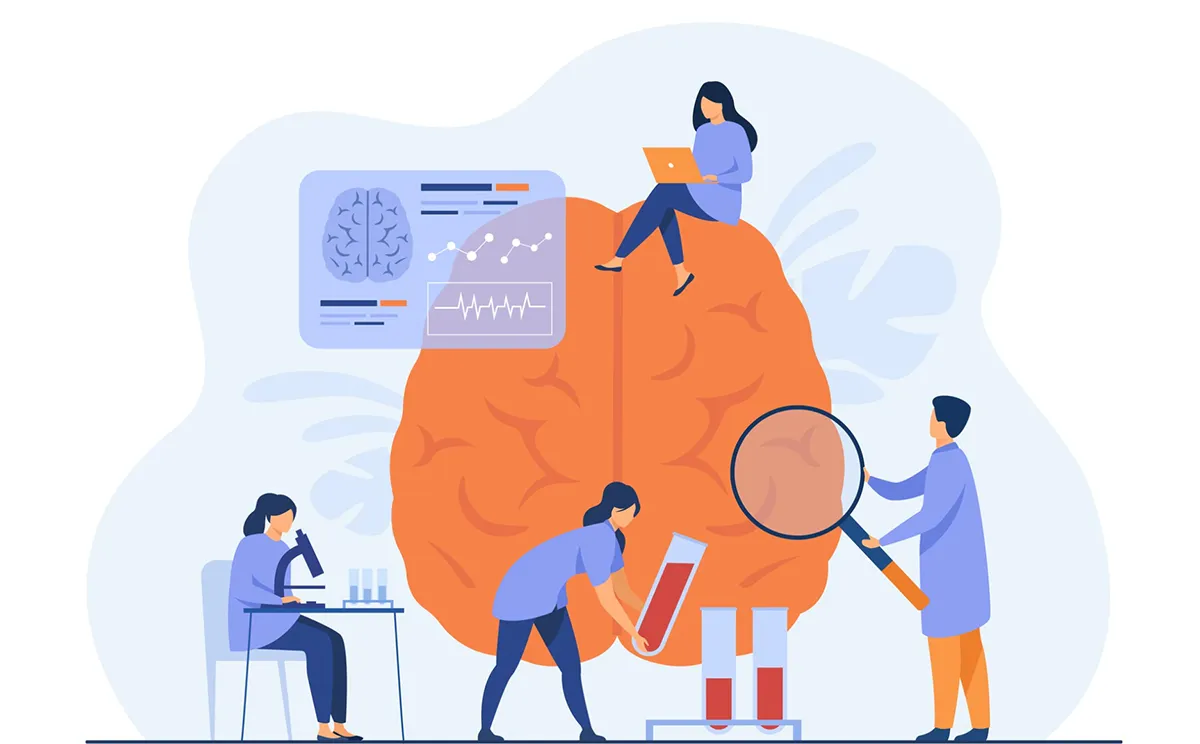Learn About Traumatic Brain Injury Research Studies
What are Traumatic Brain Injury Research Studies?
A traumatic brain injury, also known as TBI, is any injury sustained by the brain due to an external force such as a violent blow, impact, or jolt to the head. TBI causes brain tissue damage, resulting in temporary or permanent loss of function. Possible issues caused by a TBI include:
- Blood clots in the or around the brain, also known as hematomas
- Bruising (contusions)
- Swelling and increased blood pressure
- Decreased blood supply to the brain (ischemia)
- Bleeding in the brain (intracerebral hemorrhages)
- Bleeding in the space surrounding the brain (subarachnoid hemorrhages)
- Axonal injury resulting in loss of axon function
- Skull cracks and fractures
- Other diffused injuries that result in lesions
A TBI can be penetrating or closed. A penetrating TBI is when a fast-moving projectile, such as a bullet or shrapnel, or a slower-moving object, such as a knife or hammer, breaches the outer layer of the brain membrane (dura mater). If the object passes through and leaves an exit wound, it is a perforating brain injury.
A closed TBI is when the brain tissue is damaged, but the brain membrane remains intact. Sudden external acceleration or deceleration (combination of both) from accidents like car crashes, physical violence, or falls can lead to a closed TBI. As the skull is undamaged, tissue damage is determined by brain imaging using CT scans or MRIs.

The severity of a traumatic brain injury depends on the mechanism and location of the injury. Various grading scales are used to determine the severity of a TBI, such as the Glasgow Coma Scale (GCS), post-traumatic amnesia (PTA), and loss of consciousness (LOC). Age and general physicality of a person are also important determining factors. For example, a child is more likely to have a more severe TBI than an adult male who has been through the same trauma.
Severity can be classified as mild, moderate, or severe. In mild TBI, also known as a concussion, a person may stay conscious or have a few seconds or minutes of unconsciousness. Other physical symptoms include dizziness, lightheadedness, blurred vision, ear ringing, lack of coordination, headaches, nausea, vomiting, and muscle weakness. Emotional and cognitive symptoms may also be observed, including mood changes, confusion, and memory issues. In most mild TBI cases, these issues are temporary and go away as the brain heals.
In moderate and severe TBIs, symptoms may persist, and the brain may never recover fully, resulting in extended periods of unconsciousness (coma), long-term health problems, and physical and cognitive disabilities. TBI and its complications can also cause death.
Why Is Traumatic Brain Injury Being Studied Through Research Studies?
Worldwide, traumatic brain injuries are widespread, with estimates suggesting that 15 to 25 in every 100 people suffer from a TBI. In the US alone, over two million people are diagnosed with a traumatic brain injury. People most at risk are children ages 5 – 9 and adults above 65.
TBIs are the primary cause of coma and the leading cause of death and disability. It is estimated that about 13.5 million Americans have a disability due to a TBI. This number is rising as better treatments reduce the chances of death after a TBI but increase the likelihood of disability following hospitalization.
Traumatic brain injury research studies are vital to developing better detection methods and treatment options that reduce the chances of long-term disability while continuing to reduce the mortality rate. Unlike other neurological disorders, TBIs can be prevented. Therefore understanding these injuries allows researchers to improve safety equipment.
What Treatment is Available for Traumatic Brain Injury?
Every traumatic brain injury needs to be assessed and treated as quickly as possible, as delays increase the chances of permanent tissue damage, disability, and death. Immediate injuries are treated in ERs with initial assessments of sensory and motor skills that can broadly determine the severity.
But these exams may overlook possible secondary injuries that can take days or weeks to develop after the initial impact. Therefore, comprehensive physical and neurological exams are essential. Diagnostic tools such as brain imaging via CT scans and MRIs can help to locate internal lesions and better determine the extent of the damage.
Healthcare providers prescribe over-the-counter pain medication and rest for mild traumatic brain injuries like concussions. Monitoring a patient's recovery is vital to ensure symptoms improve and new ones do not develop. Preventing future TBIs is essential as further brain injuries will take longer to heal.

For cases of moderate and severe traumatic brain injury, treatment is centered on preventing death. This involves stabilizing a patient's vital organs, breathing, and blood pressure to prevent further brain damage. Surgical intervention may be necessary to treat and prevent secondary injury. This can include:
- Relieve intracranial pressure by draining excess fluid
- Removing dead brain tissue and foreign objects such as a bullet
- Removing blood clots
- Repairing fractures
Patients with severe TBIs are often put in a medicated coma and intubated until their condition has stabilized. Once a patient has recovered enough, rehabilitation treatment is started to regain regular physical and cognitive activity.
Preventing TBIs is the best treatment. By following safety procedures and protocols at home, in the workspace, and in public spaces, individuals can significantly decrease their chances of suffering from a severe TBI. This includes:
- Wearing a seatbelt in a vehicle
- Following traffic laws and not driving under the influence
- Wearing a helmet while playing sports like football or riding a bike
- Installing safety gates, handrails, and anti-slip mats in accident-prone areas
- Avoiding crowding and rushing in highly populated areas
- Regular exercise to improve strength and balance
What are Some Breakthrough Research Studies Involving Traumatic Brain Injury?
2020: This research study investigated the effectiveness of the i-STAT TBI plasma test to detect mild TBIs such as concussions objectively. Funded by the pharmaceutical company Abbott in collaboration with the Department of Defense, this blood test was developed to measure specific patients in the blood following a TBI. It produces results within 15 minutes and negates the need for a CT scan which takes longer and delays treatment. 1100 participants were enrolled, 18 years and older, with an acute TBI within a 12-hour timeframe. This blood test was approved by the FDA in 2021 as the first rapid handheld blood test for concussions.
2021: This study researched the effectiveness of home-based blue light therapy to help fatigue and sleep disorders after a brain injury. Twenty-four participants, median age of 44, with mild to severe TBI or stroke within the last three months were enrolled. For two months, their fatigue and sleep patterns were observed as they used a blue-enriched white light during the day and a blue-depleted light before sleeping. A one-month follow-up was also done. Preliminary results showed positive outcomes concerning sleep-related problems. However, results must be assessed against a larger sample size to determine statistical significance.
2021: Researchers studied the effectiveness of measuring fluid and neuroimaging biomarkers such as neurofilament light (NFL) and Tau protein to predict long-term outcomes and progressive nerve degeneration after a traumatic brain injury. Sponsored by the Imperial College London, 313 participants aged 18 – 80 with moderate to severe TBIs were enrolled. Fluid samples and scans were performed twice daily for the first ten days, every ten days for six weeks, and finally, during the 6th and 12th month after the initial injury. Initial findings suggest measuring such biomarkers can assist in determining axonal injury and help healthcare providers choose the most effective treatments. Patients and family members can also be given more accurate information about the long-term prognosis after a TBI.
2021: This study researched the effectiveness of the IMPACT and CRASH prognosis models in predicting the functionality of people with moderate and severe traumatic brain injuries. Sponsored by the University Hospital in Antwerp, 4559 patients from 59 centers across Europe were enrolled and observed for six months after being analyzed by the IMPACT and CRASH models. Both models were able to identify unfavorable outcomes and high-risk patients. These findings suggest that such models are better for primary examination and can result in improved treatment and care.
2021: This research study investigated the association of post-traumatic stress disorder (PTSD) and post-concussion (PC) symptoms with quality of life and returning to work after a mild traumatic brain injury. Over six months, 1566 individuals were enrolled and observed. Findings showed that patients with PC or PTSD had decreased quality of life, high needs for rehabilitation, and lower return to work rates. This study suggests the need for PC and PTSD-focused treatment for cases of mild TBI.
2021: This study researched Acceptance and Commitment Therapy (ACT) in treating psychological distress in people with traumatic brain injury. Ninety-three people with documented complex mild to severe traumatic brain injury were enrolled. However, enrollment criteria included clinically diagnosed psychological distress and normal-to-mildly memory impairment during recovery. These participants were divided and received either eight weeks of ACT customized to address TBI-related cognitive problems or a single session of standard counseling. Findings showed that those who underwent ACT had significantly less psychological distress and improved Acceptance and Action Questionnaire scores. However, more research is needed against a control group.
Who Are The Key Opinion Leaders/Researchers/Institutions On Traumatic Brain Injury Research Studies?
National Institute of Neurological Disorders and Stroke (NINDS)
Part of the National Institute of Health (NIH), NINDS funds research on the nervous system and brain. With offices across the US, the NINDS oversees various clinical trials and international collaborations with animals and people to understand the brain after trauma better.
Brain Injury Association of America (BIAA)
The BIAA is a national advocacy organization that advances research, education, and treatment for those suffering from the effects of brain injuries. By funding statistical surveys, research, and clinical trials, the BIAA works with national and international groups to develop better prevention and treatment options for both non-traumatic and traumatic brain injuries.
Center of Brain Injury Research and Training (CBIRT)
CBIRT is part of the University of Oregon’s Department of Psychology. Researchers here study traumatic brain injuries and their long-term effects to develop better treatment and rehabilitation training. CBIRT partners with educators, healthcare providers, family members, and individuals to improve the quality of life of those managing disabilities caused by a TBI.